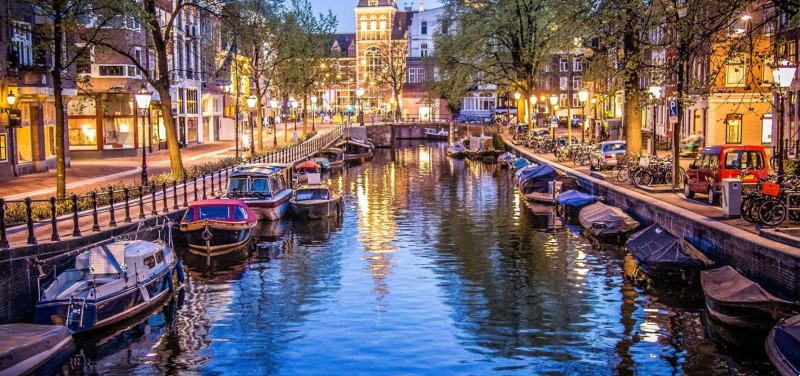Besides tulips and windmills, people from around the world associate Amsterdam with its canals. Any visit to the capital of the Netherlands is incomplete unless you enjoy the city’s beautiful canals.
History of Amsterdam’s Canals
Construction of Amsterdam’s Canal Ring or Grachtengordel started in the 17th century, transforming the urban landscape of the city and create a unique cityscape. A major urban planning project started during Dutch maritime successes of the Golden Age, this network of waterways was developed by draining and reclaiming land. Canals allowed new residences to be built and provided better defense and water management.
A UNESCO World Heritage Site, the canals evolved into cultural hubs during the 17th and 18th centuries. Singel served as a moat from 1480 to 1585, encircling medieval Amsterdam. As the city grew, it was transformed into the inner-most canal in the city centre. Herengracht and Keizergracht are other major canals in the city centre, while Prinsengracht is the longest of Amsterdam’s canals. These four central canals are renowned for their ornate canal-side properties and monuments.
Other notable canals include Zwanenburghwal in Amsterdam’s former textile industry hub and Kloveniersburghwal where the Royal Netherlands Academy of Arts and Sciences is based. Brouwergracht connects the four central canals, marking the northern end of the canal belt. Former warehouses and storage depots along the canal that houses silks and spices from Asia are now some of Amsterdam’s most expensive apartments. In 1995, four new canals – Brantasgracht, Lamonggracht, Majanggracht and Seranggracht – were built on Java Island north-east of the city centre. Each one is lined with modern takes on classic canal houses.
Experiencing Amsterdam’s Canals
Must-see sections of Amsterdam’s canals include the Gouden Bocht or Golden Curve on the Herengracht. This section has some of the most beautiful canal houses in the city. The view on the bridge at the corner of Reguliersgracht and Herengracht is particularly stunning. Another charming bridge is the Magere Brug or Skinny Bridge, one of the most romantic spots in Amsterdam.
If you prefer to stay at the Canals, check out these Amsterdam Canal hotels.
Canal Cruises
These historic routes allow visitors to appreciate the city from a unique perspective. A cruise on the canals is one of Amsterdam’s most popular activities and a fantastic way to see the city’s sights. Many tours are available, from one-hour outings and dinner cruises to hop on, hop off experiences. The canals are also easily explored on foot or on a bike.
Museums and Monuments
Besides walking along the canals or going on a cruise, Amsterdam’s canals are also home to fabulous attractions. Het Grachtenhuis tells the history of the city’s canal ring. Located in a canal house, the museum brings the development and history of the canals to life with multimedia exhibits. You can also peer into one of the canal’s houseboats at the Woonbootmeseum. Other attractions include Anne Frank House, Westerkerk, Noorderkerk and the Noordermarkt along Prinsengracht. Opened in 1987 to commemorate those persecuted because of their homosexuality, the Homomonument also faces the Keizersgracht.
Annual Events
The canals host events throughout the year, including Open Garden Days and Amsterdam Heritage Days when doors to canal houses and monuments open for everyone to explore. Gay Pride festivities include the colourful Canal Parade, while the sound of music fills the Canal Ring during the Grachtenfestival. The King’s Day also sees waterways transformed with floating parties.

